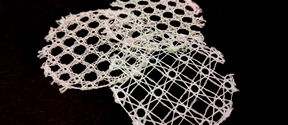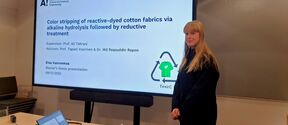Designs for a Cooler Planet
Aalto University’s biggest annual exhibition showcases interdisciplinary experiments from our researchers and students. Designs for a Cooler Planet will be held next in the autumn of 2026.
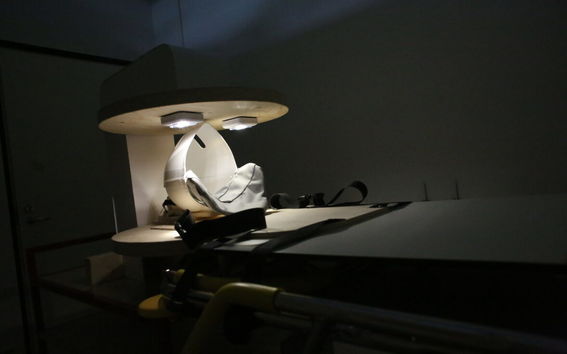

Imagine if a stroke could be diagnosed quickly using a portable imaging device in an ambulance. Or if diagnostic brain scans of a child, a frail elderly person or a claustrophobic adult could be done in a quiet room with a small device while a loved one holds their hand. That would be far better than the large, noisy enclosures that are used today, with patients confined motionless in a cramped space.
That’s the medical future being created by a multidisciplinary project at Aalto University. Engineers and designers in the Accessible Magnetic Resonance Imaging (AMRI) research group are developing not only an accessible MRI machine but also entirely new practices and facilities for its use.
AMRI combines two separate but related projects, says Niilo Kämäräinen, who works on AMRI at the Department of Design. The technical development of the accessible imaging device is one branch of the work, while the other is the framework for future applications, such as in a mobile stroke unit.
To get a first-hand look at the latter, I travelled with Kämäräinen to Lappeenranta to visit the LAB University of Applied Sciences, where ambulance paramedics are trained. There, the research team has gained invaluable information on the requirements for accessible imaging in a cramped ambulance – in busy, high pressure and often distressing situations.
But before looking at their latest results, let's find out how and why Aalto researchers started working on an accessible MRI machine.
One of the reasons behind the AMRI project is woven into the basic idea of Aalto University, explains University Lecturer Lauri Palva from the School of Electrical Engineering. ‘When Aalto was founded, health and health-related technologies were one of the top priorities. That’s certainly one reason why that’s still a huge research area here,’ says Palva.
One of the key figures in the development of MRI in Finland was Professor Emeritus Raimo Sepponen. Sepponen’s career in MRI development began in the 1970s and 1980s, when the first modern MRI machines were introduced in Finland. His work and ideas are also behind the research and development of accessible MRI at Aalto – and the whole AMRI project.
‘One of his projects was already researching this kind of weak magnetic field imaging, and he had been working on this project for a long time even before I got involved,’ says Palva.
Today’s large MRI machines use very strong magnetic fields, because the stronger the field, the more details can be discerned when imaging a patient. The accessible MRI project uses weaker magnetic fields to meet different medical needs. ‘What we’re looking at are applications where you don’t necessarily need to go into such fine detail to get useful results. And there are such cases,’ Palva says.
When Palva joined the project, the electrical and magnetic properties of the imaging system had been determined, but the development of the device itself was just beginning. The team worked on developing the magnet and the electronics, both of which are needed to produce an image. But Palva explains that the technology has also recently leapt forward in other ways. Artificial intelligence and improved algorithms are also part of accessible MRI, because they help researchers push the bounds of what can be accomplished with a weak magnetic field.
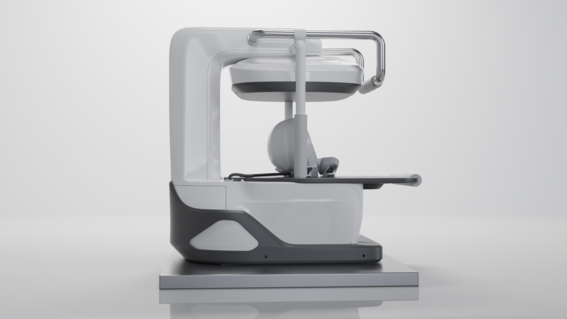
Like Kämäräinen, Palva highlights the multidisciplinary nature of AMRI and the numerous collaborators that make the project possible. The project is funded by the Technology Industries of Finland Centennial Foundation, the Jane and Aatos Erkko Foundation and Business Finland. Professor Ilkka Laakso from the School of Electrical Engineering leads the overall project, and the creation of new practices and spaces for using accessible devices is led by Professor Severi Uusitalo of the School of Arts and Design. Aalto Design Factory has also been involved in the project, helping with the mechanical design of the magnet.
Palva and Kämäräinen stress that these multidisciplinary and cross-university collaborations are the project’s lifeblood. ‘When you think about the design and use, you need to be able to understand what the technology is capable of. And the technical team needs information from the designers about the requirements for the technology. We’re working together all the time,’ says Palva.
The design process incorporates input from end users through cooperation with the paramedic training programme at LAB University of Applied Sciences. Niilo Kämäräinen and Erika Renedo Illaregi, a post-doctoral researcher and service design expert, have been to three simulations of the mobile MRI stroke unit during the past year, and they learned an enormous amount from each one.
‘In previous training sessions, we extensively explored the mobile stroke unit. The paramedic trainers and students told us what they think it should be like, and they could customise the ambulance and treatment protocol. Now, for this fourth session, we have a very specific topic in mind. We’re focusing on patient handling and also on interactions with the equipment, because there are always challenges with the tools,’ explains Kämäräinen on the way to Lappeenranta.
When we arrive, we’re met by two paramedic teachers, Antti Tanninen and Anssi Hapuli, who have been closely involved in the project. This time there are no students, but two paramedics drop by during their shift to take part in the simulation. Like Tanninen and Hapuli, they’re involved because, in Tanninen's words, they want to ‘bring in perspectives from the field’ as the research moves from theory to application.
The simulation will once again provide valuable practical information to the researchers, including how patients would be transferred from an ordinary ambulance to a mobile stroke unit, how they would be placed in the MRI machine and how the treatment protocol would proceed. One of the paramedics who visited the simulation during their shift raises an interesting question, asking whether the device could also image jugular veins, which are involved in a large proportion of cerebrovascular incidents. This is another area the team will consider as they continue developing the device.
The goal of the AMRI project isn’t just to develop a technical device but to respond to an existing need. Everyone I spoke to agreed about the key need, and research findings say the same thing: the incidence of cerebrovascular disorders among young working-age people has increased significantly in recent decades. The ability to rapidly diagnose these cases is vital for providing the correct treatment.
Distinguishing a stroke from a cerebral haemorrhage based solely on external symptoms is difficult, but it’s essential for effective treatment. The two conditions may share symptoms, but the treatments are completely different – and the wrong treatment could make things worse.
‘Finland has huge peripheral areas where there aren’t many ambulances and the travel distances are long. It’s precisely for these time-critical patients that trained staff and functioning equipment would be essential. That would enable the type of brain event to be identified with certainty, and the decision to start treatment could be made quickly. It would really save lives,’ says Hapuli, an experienced paramedic and paramedic trainer.
Tanninen, who is working on his PhD in emergency care, points out that in addition to saving lives, AMRI would also ultimately lead to financial benefits. Rapid diagnostics would speed up access to the right treatment, improving the chances of recovery.
‘If someone of working age, say 50 years old, falls ill and this device could be used to make a differential diagnosis on the spot to determine whether they need an operation or a blood clot dissolved, that alone would be the first benefit. And in cases where dissolution is the right treatment, the sooner it can be started, the better the prognosis will be,’ says Tanninen.
Tanninen and Hapuli add that cerebrovascular incidents in working-age patients are a major healthcare cost. Follow-up treatment is generally expensive, and even a small delay in starting treatment can mean the patient won’t be able to work again.
‘That means the worker is on sick leave, and it also requires a huge amount of rehabilitation to be able to cope with life after a stroke. With all the money it saves, accessible MRI is a very effective tool, in my opinion,’ says Tanninen.
Palva says the development of an AMRI machine is well underway but, as always in academia, much depends on future funding. The team hopes that they’ll soon be able to tell when the device will produce images of sufficient quality.
‘We’re on the verge of something exciting in the sense that we’re now adjusting the electronics to get the signal to a sufficient level. Once the signal is strong enough, we’ll start developing signal processing in our lab equipment,’ says Palva.
But even with a usable device still over the horizon, the project is constantly providing new insights into imaging with weak magnetic fields, says Palva.
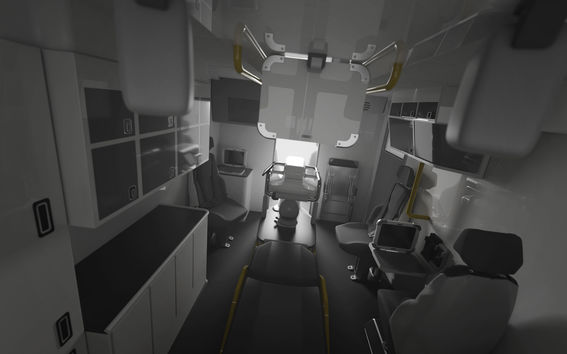
‘In the future, we could use the information provided by the laboratory instrument for other applications – perhaps even for applications we don’t know about yet," Palva says.
The valuable information gathered in the Lappeenranta simulations will soon be used to design Finland's first mobile stroke unit. The project has already attracted interest from potential partners in both the public and private sectors, and more partners are being gathered for the Business Finland Co-Innovation project. The project, planned for next year, will start building an ambulance with an AMRI machine.
The paramedics are eagerly awaiting the outcome. ‘I'm really looking forward to the end result. I can already see that everything this project brings us is really fascinating,’ says Anssi Hapuli.
Accessible MRI was also part of the Designs for a Cooler Planet exhibition. This year the over twenty projects shed light on the hidden and noteworthy.

Aalto University’s biggest annual exhibition showcases interdisciplinary experiments from our researchers and students. Designs for a Cooler Planet will be held next in the autumn of 2026.

Featuring a pilot mobile stroke assessment unit.

